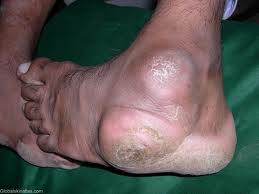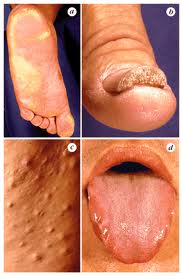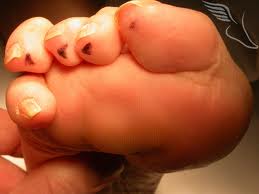Callosities also known as clavus or corns are toughened areas in the skin, as a result of repeated pressure or repeated contact with rough surfaces. They are most common on the hands and feet but appear localized to the area that bears repeated pressure or abrasion.
Cause of Callosities (Corns):
Corns and calluses arise from hyperkeratosis, a normal physiological response to chronic excessive pressure or friction on the skin.

Who gets a corn or callus?
Anyone who subjects their body parts repeatedly to pressures, are candidates for corn or callus formations.
One’s chances of developing corns or callosities increase if they are subject to the following conditions:
- Ill-fitting shoes, Cramped footwear.

- High-heeled shoes.
- Foot deformities: bony projections or poorly united fractures, the presence of a second toe longer than the first toe.
- Writers are prone to developing callosities over the middle finger called ‘a writer’s bump’.
- Weight lifting can cause callosities in the palms of the person.
- Occupations like hair-dressers, carpentry, boxing, cherry pitting, dancers who perform spins on their backs, jewelry making etc. increase the occurrence of callosities on parts exposed to repeated frictions and pressures.
- Infants and children who suck their toes or fingers develop callosities over the areas of friction.
- Some medical conditions predispose a person to callosities. Conditions that present with callosities at some point are:
- Diabetes -> chronic diabetes with peripheral neuropathy.
- Syphilis
- Rheumatoid arthritis -> abnormal pressure if there is a deformity of the foot.
- Diseases which affect nerves carrying sensations (sensory neuropathies)
- Obesity
- Amputation
- Exposure to toxins like arsenic can cause hyperkeratosis of the palms and soles.
- Certain religious activities like offering prayers by kneeling with hands on forehead give rise to callosities on forehead called ‘prayer calluses’.

Symptoms
- Affected area of the skin appears rough, thickened and hyperkeratosis.
- Pain: on applying direct pressure is not uncommon. Some callosities can be so painful that they seriously alter the person’s gait and daily activities.
How long do Callosities last?
In most cases, the callus resolves once the offending pressures are removed. But, if they are caused by an underlying condition, there are high chances of recurrence.
Homeopathy for callosities
Callosities and corns show promising results with homeopathic treatment. Homeopathic medicines can relieve the pain as well as recurrence of the callosities. Painful callosities that cannot be scrubbed by pumice stones respond well to homeopathic medications taken internally.





